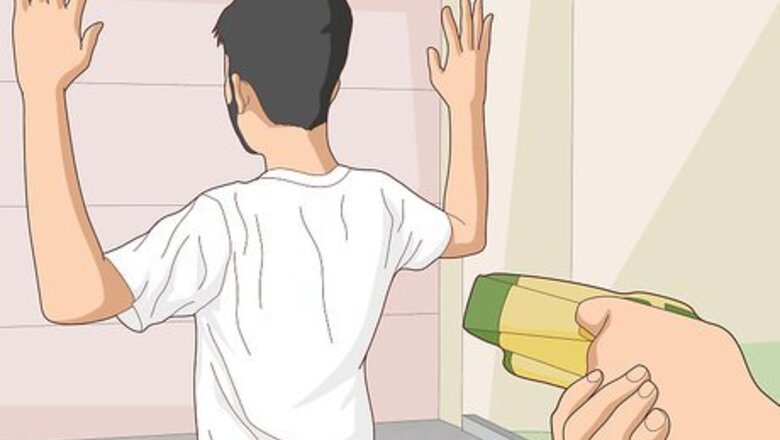
views
Anticipating Resistance
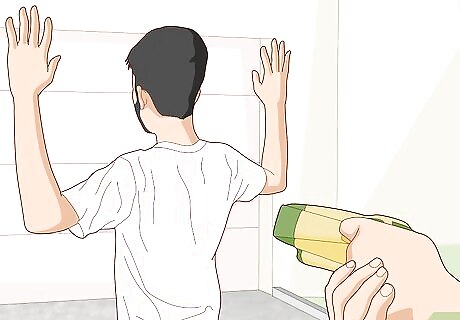
Take control of the situation. It’s difficult and inadvisable to handcuff someone who is actively resisting. Before beginning to handcuff an uncooperative suspect, concentrate on controlling them first. If you can’t restrain them with your hands or body it might be best to step back and use a non-lethal method to subdue them, such as a Taser or an expandable baton. Always be ready for resistance, even if the suspect seems to be cooperative. If you are within six feet of a suspect you need to act as if you are anticipating a struggle. Speak confidently, keep your grip on firm, and apply the handcuffs swiftly.
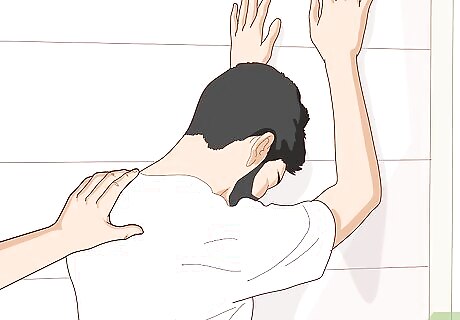
Restrict your suspect’s field of vision. If your suspect can’t see the actual process of handcuffing they are unlikely to resist in an effective way. This means handcuffing them from behind while facing a wall or other large object. Try to avoid handcuffing a person directly against an object like a wall or car. If they decide to resist, it will give them a surface to leverage against and they may injure themselves or you.

Keep your balance. Stand with your feet slightly parted and knees slightly bent so that you can keep your balance in the face of an assault. If your suspect begins violently resisting and you aren’t properly balanced they may knock you over, resulting to injury in yourself and the possible loss of your suspect. While keeping your balance, try to limit theirs. Have the suspect spread their feet apart and bend slightly forward, or handcuff them while they’re kneeling on the ground.
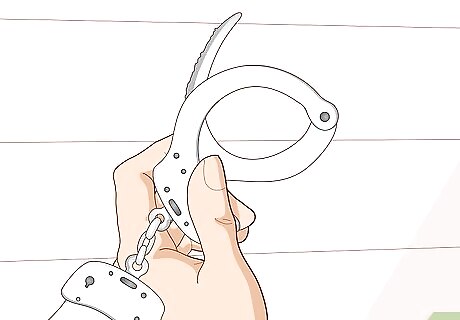
Carry handcuffs correctly. Handcuffs should be stored in a loaded position, meaning that the shackle jaw should be pushed through the ratchet in the body of the cuff until it's almost through. Check that the double lock is not already engaged––this should only be operated after cuffing. Be knowledgeable about your handcuffs. Always read the manual in advance so that you will know the information you need to know. There are several kinds of handcuffs so you need to be familiar with your own.
Handcuffing Behind the Back

Handcuff your suspect with their arms behind their back. This technique of handcuffing has several variations. Essentially, the suspect interlaces their fingers behind their backs to be handcuffed, locking their wrists and elbows and reducing the effectiveness of any resistance.
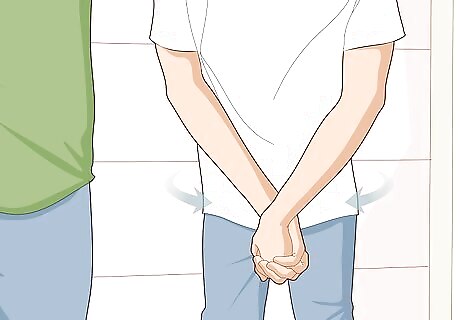
Ask the suspect to place their hands behind their backs. Their palms should be touching and their fingers entwined in a “prayer” position. If the suspect begins to resist arrest, you can either hold the wrists together or hold the pinkies together to restrain them.

Hold the suspect’s left wrist and press the bow of the handcuff against the wrist. Try not to remove your hands from the suspect's wrists; as they are standing, they could easily run if they get free of your grip. The chain of the handcuff should be coming out of the back part of the hand and further from the body. In this position, the suspect can’t move their hands under their legs and in front of their bodies.
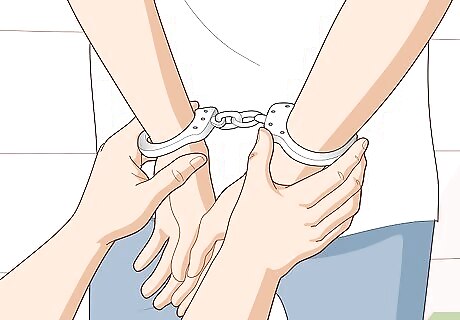
Press the bow of the second cuff against the suspect’s right wrist and secure the cuff. After the cuff is secured, lock the secondary locking mechanism. If your cuffs don’t have one, be sure to double check that the cuffs aren't too tight. A double-locking mechanism is a lock that ensures the cuffs can’t get tighter once they’re placed on the suspect, reducing the risk of injury.
Handcuffing Over the Head

Handcuff your suspect with their hands behind their head. This technique, sometimes called the LAPD technique, has the suspect interlace their fingers behind their heads before handcuffing. This can occur in a standing or kneeling position.
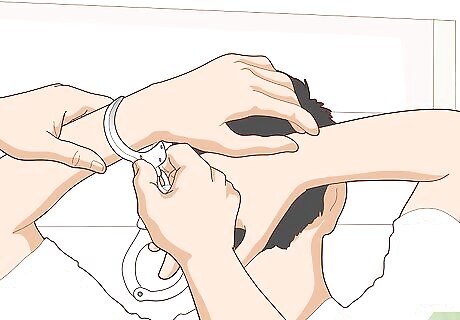
Stand behind the suspect and retrieve the handcuffs. Grasp the suspect’s left wrist in your hand and press the “bow” of the handcuff against their wrist. Cuff the wrist, making sure that the cuff isn’t too tight.
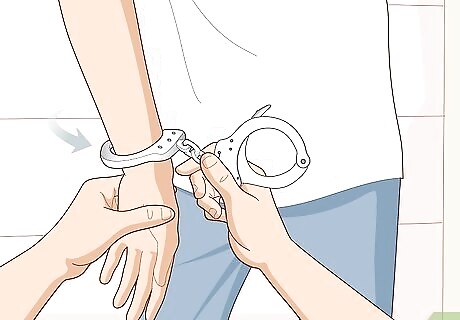
Move the cuffed wrist behind their back. Grasp the cuffed wrist and move it in a circular motion away from the body and behind the suspect’s back. The chain of the handcuff should be coming out of the cuff away from the body. The suspect’s other hand should still be resting on the back of their head.

Move the other hand behind the suspect's back. Holding the cuffed wrist in one hand, grasp the suspect’s right wrist and move it in a circular motion behind the suspects back next to their cuffed hand. Press the suspect’s hands together, palms facing outward, and extend your left hand to restrain both of their wrists. Some people find it helpful to hold the suspect’s thumbs together to help restrain them.
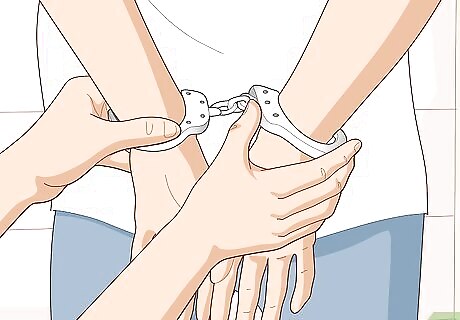
Cuff the suspect’s other wrist. Try to complete this step swiftly as the subject can still resist with one hand free. If the suspect begins to struggle, subdue them before continuing to handcuff them. If the handcuffs have a double locking mechanism, this is the time to lock it. Always double check the tightness of the handcuffs. You should be able to slide your smallest finger between the cuffs and the person’s wrist. Leaving the cuffs too tight can result in nerve damage to the suspect.
Handcuffing in Front of the Body
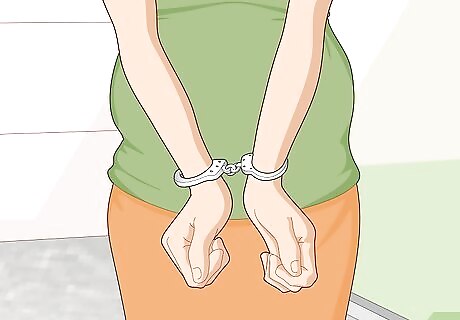
Handcuff your suspect with their hands in front of their body. There are some people that need to be handcuffed in front of their bodies. This list can include pregnant women and people with limited mobility in their arms.
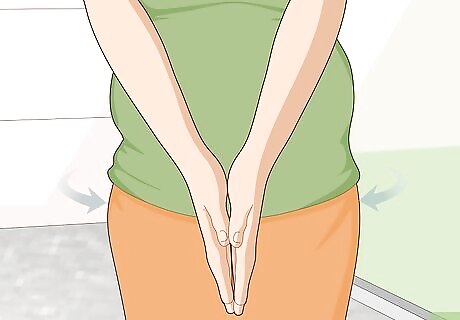
Ask your suspect to press their hands together in a "prayer" position. This limits their mobility and gives you greater control. Hold their wrists together from the underside of their hands, close to their pinkies. If they begin to resist, you can hold their pinkies together and have greater control.
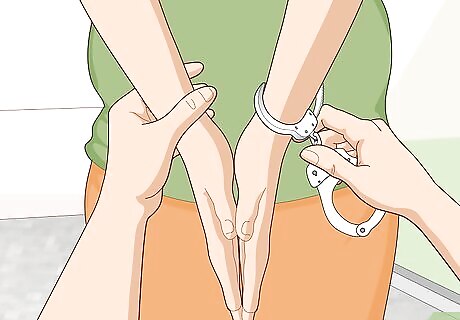
Press the bow of the handcuff against their right wrist and lock the cuff into place. Place the other cuff on the suspect quickly and accurately. Do this by grasping the suspect’s wrists with your left hand and then removing your right hand. The suspect should have pressure on their wrists at all times.

Press the bow of the cuff against their left wrist and lock the cuff into place. The chain should be coming out from the hands and away from the body. If your cuffs have a double locking mechanism, now is the time to lock it.

















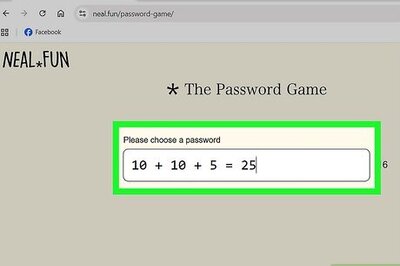

Comments
0 comment